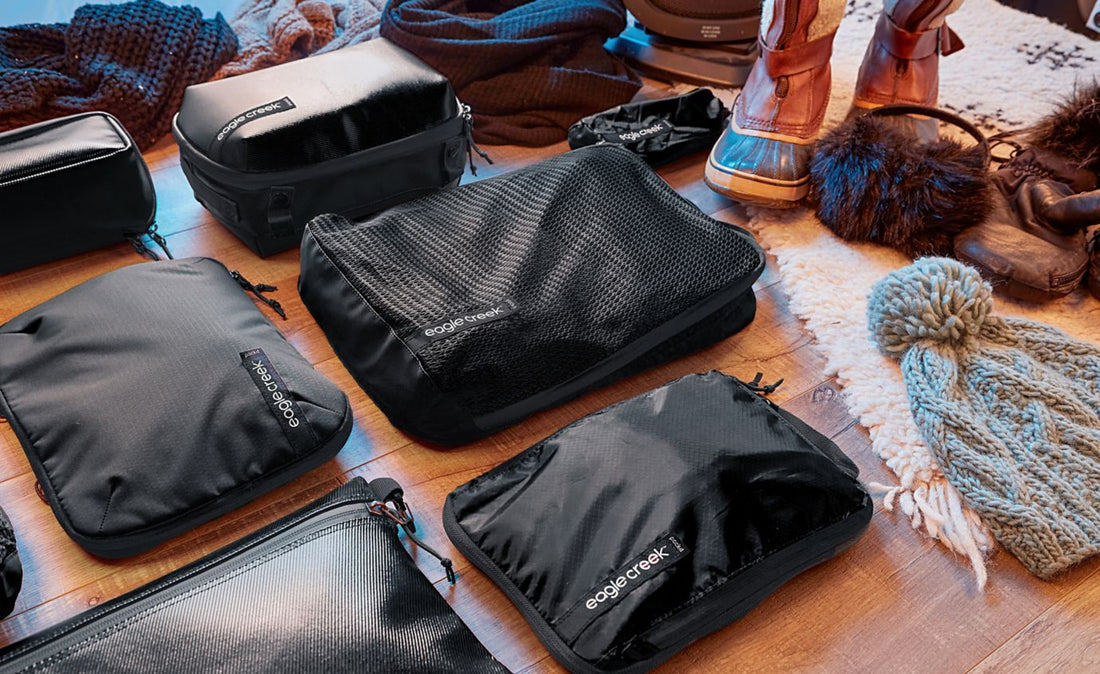Maximizing space in shoes and bags can be achieved by strategically filling empty spaces with smaller items. This ensures efficient use of available space and prevents items from shifting during transport.
Whether it’s using socks to stuff shoes or utilizing small pouches to fill handbags, these tactics help maintain the shape of the items and make the most of the available space. By following these stuffing strategies, you can ensure that your shoes and bags remain organized and well-preserved.
Efficiently utilizing the available space in shoes and bags is crucial for maintaining their shape and maximizing storage capacity. Whether it’s a pair of heels, sneakers, or a handbag, properly filling the empty spaces with smaller items prevents shifting and maintains the integrity of the items. This guide will demonstrate how to strategically stuff shoes and bags with smaller items to make the most of the available space while keeping everything organized and well-preserved.

Credit: www.eaglecreek.com
Contents
The Art Of Smart Packing
Discover the art of smart packing with our expert tips on utilizing empty spaces. Learn how to maximize space in your shoes and bags by stuffing them with smaller items, ensuring efficient and organized travel.
| Space-Saving Techniques |
|---|
| Essentials vs. Extras |
Choosing The Right Luggage
When choosing the right luggage, it’s important to consider the differences between hardshell and softside suitcases. Hardshell suitcases offer better protection for fragile items, while softside suitcases are more flexible and can fit into tight spaces. Size and weight considerations are also crucial; smaller bags may be more convenient for stuffing small items into empty spaces, but larger bags can accommodate a greater variety of items. Selecting the right luggage ultimately depends on the specific needs of the traveler and the nature of the items being packed.
Shoes: A Traveler’s Dilemma
When it comes to packing for travel, shoes can be a dilemma. Selecting versatile footwear is essential to make the most of limited space. Instead of leaving empty spaces in shoes and bags, stuffing them with smaller items is a smart strategy.
Here are some shoe packing strategies:
- Roll up socks or underwear and place them inside shoes to maximize space.
- Stuff smaller items like jewelry or electronics into shoe compartments.
- Use shoe bags or plastic bags to separate shoes and prevent dirt from spreading.
- Consider packing shoes in a separate compartment or using shoe organizers.
By utilizing empty spaces in shoes, you can efficiently pack and optimize your luggage. This not only saves space but also helps protect your shoes and other items during transit. So, next time you’re packing, remember to stuff strategically!
Bags Within Bags
When packing smaller items such as shoes and bags, it’s essential to make the most of the available space. One strategy is to utilize bags within bags, which can help to fill empty spaces efficiently. Packing cubes are a great option for organizing and maximizing space within bags. They come in various sizes and allow you to separate different items, making it easier to locate them later. Additionally, compression bags play a significant role in optimizing space utilization. These bags remove excess air, reducing the overall volume of items and allowing them to fit snugly within the bag. By implementing these stuffing strategies, you can effectively use empty spaces in your shoes and bags, ensuring that every inch is utilized. |
Organizing Your Carry-on
When packing your carry-on bag, it’s important to utilize every inch of space efficiently. One way to do this is by stuffing smaller items into empty spaces in your shoes and bags. This not only saves space but also helps keep your items organized and prevents them from shifting around during travel.
Essential Items For Easy Access
When packing your carry-on, make sure to keep essential items easily accessible. This includes items such as your passport, boarding pass, and any necessary medication. Keep these items in a small pouch or pocket at the top of your bag for easy retrieval.
Layering Method For Efficiency
Another way to maximize space in your carry-on is by using the layering method. Start by placing your heaviest and bulkiest items at the bottom of your bag, such as shoes or a jacket. Then, layer lighter items on top, such as clothes or electronics. This helps distribute weight evenly and prevents your bag from becoming top-heavy and difficult to carry.
Protecting Your Footwear
One of the best ways to protect your footwear is by using shoe covers and pouches. Shoe covers are a great way to keep your shoes clean and free from dust, dirt, and other debris. They are also useful when traveling, as they can help keep your shoes separate from your other clothes and belongings.
Pouches are another great option for protecting your shoes. They come in a variety of sizes and materials, so you can choose one that best fits your needs. Pouches are especially useful for protecting delicate shoes, such as those made from suede or leather.
In addition to using shoe covers and pouches, it’s important to prevent deformation in your shoes. Stuffing your shoes with smaller items, such as socks or tissue paper, can help maintain their shape and prevent them from becoming misshapen over time.
Overall, by utilizing empty spaces in your shoes and bags with smaller items, you can protect your footwear and extend their lifespan.
Maximizing Bag Space
When it comes to filling empty spaces in bags and shoes with smaller items, there are a few strategies that can help you make the most of the available space. One popular technique is to roll your clothes instead of folding them. Rolling not only saves space but also helps prevent wrinkles. Another useful strategy is nested packing, which involves placing smaller bags or pouches inside larger ones. This way, you can utilize every inch of your bag and keep similar items together.
| Benefits of Rolling Clothes | Advantages of Nested Packing |
|---|---|
| – Saves space | – Efficient utilization of bag space |
| – Helps prevent wrinkles | – Keeps similar items together |
Traveling Light With Style
Traveling light with style is all about utilizing empty spaces efficiently. When it comes to coordinating outfits with fewer shoes, it’s important to choose versatile options that can be paired with multiple outfits. Opt for neutral colors and classic styles that can be easily mixed and matched. Additionally, consider packing shoes that can serve dual purposes, such as comfortable walking shoes that can also be worn for a night out.
Accessorizing with compact bags is another way to maximize space. Look for bags with multiple compartments and pockets to keep your smaller items organized. When filling empty spaces in shoes and bags, think creatively. Use smaller items like socks, rolled-up belts, or even jewelry pouches to fill any gaps and prevent items from shifting during travel.
By following these stuffing strategies for small items, you can make the most of your available space and travel light without compromising on style.
Special Considerations
When packing small items in shoes and bags, it’s important to consider weather and terrain. For instance, if you’re going to a rainy area, pack waterproof items to protect your belongings. Additionally, it’s crucial to be culturally sensitive and adhere to dress codes. Respect local customs and avoid packing items that could be considered offensive or inappropriate. By adapting to the surroundings, you can ensure that your stuffed items are both practical and respectful.
Maintenance On The Move
When traveling, keeping shoes clean can be a challenge. One strategy is to stuff smaller items, such as socks or underwear, into the shoes to fill empty spaces and prevent them from getting crushed. This not only maintains the shape of the shoes but also saves space in your luggage.
Similarly, when dealing with damaged bags, stuffing smaller items into the empty spaces can provide extra padding and prevent further damage to the bag. Items such as scarves or t-shirts can be rolled up and placed in the gaps to keep the bag from collapsing.
| Benefits of Stuffing Small Items: | How to Stuff Small Items: |
|---|---|
| 1. Maintains the shape of shoes and saves space in luggage. | 1. Roll up socks, underwear or small clothing items and stuff them into shoes. |
| 2. Provides extra padding and prevents further damage to damaged bags. | 2. Roll up scarves or t-shirts and place them in the gaps of damaged bags. |
Frequently Asked Questions
What Is The 5 4 3 2 1 Packing Method?
The 5 4 3 2 1 packing method is a travel hack that involves packing 5 sets of clothing, 4 of underwear and socks, 3 of shoes, 2 of gadgets, and 1 toiletry bag. It helps streamline packing and minimize overpacking.
Are Packing Cubes Really Worth It?
Yes, packing cubes are worth it. They help organize and compress your clothes, making packing and unpacking easier.
How To Pack A Suitcase To Save Space?
To save space when packing a suitcase, roll your clothes, use packing cubes, and stuff smaller items inside shoes. Choose versatile clothing and use compression bags. Lastly, pack heavy items at the bottom and fill any gaps with smaller items.
How Do You Pack In Small Spaces?
To pack in small spaces, roll your clothes, use packing cubes, and maximize every inch. Choose versatile items and pack items inside shoes. Consider vacuum-sealed bags for bulky items. Be strategic and prioritize essentials. Keep it organized to fit more in less space.
Conclusion
Incorporating small items into shoes and bags optimizes space and organization. By effectively utilizing empty spaces, you can enhance the functionality and aesthetics of your accessories. These stuffing strategies not only maximize storage but also safeguard your items. Implementing these techniques will help you maintain a clutter-free and stylish collection.

